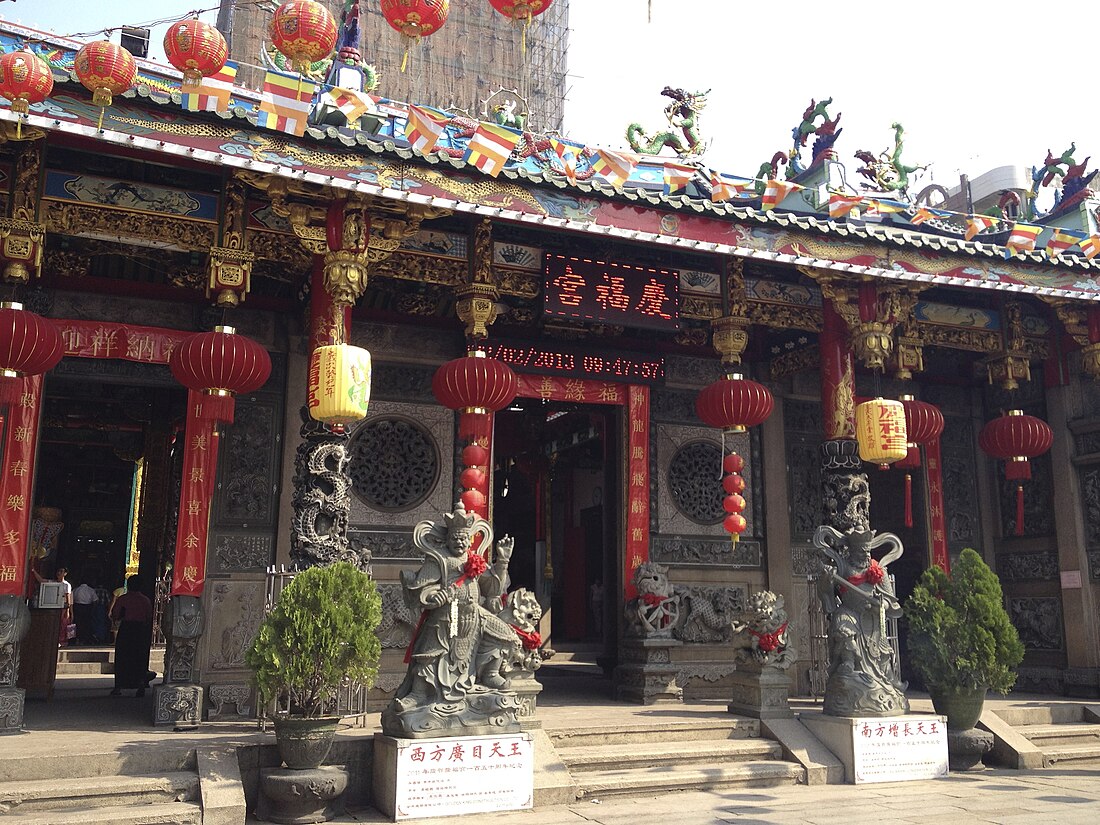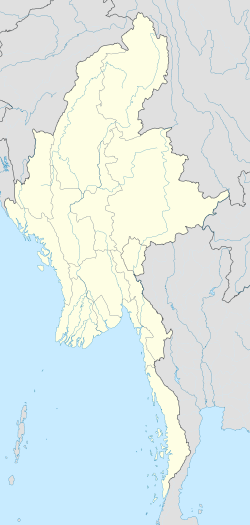Top Qs
Timeline
Chat
Perspective
Kheng Hock Keong
Largest and oldest Mazu temple in Yangon, Myanmar From Wikipedia, the free encyclopedia
Remove ads
The Kheng Hock Temple, also known as the Kheng Hock Keong (慶福宮), is the largest and oldest temple to the Chinese sea-goddess Mazu in Yangon, Burma. It is located on the corner of Sintodan Street and Strand Road in Latha Township. Kheng Hock Keong is maintained by a Hokkien Chinese clan association.[1] The temple attracts mostly Hokkien and Hakka worshipers, while the other temple in Latha Township, called the Guanyin Gumiao Temple, attracts Cantonese worshipers. The temple also houses the Hokkien Association, serving as a social hub for the Hokkien community.[2]
Remove ads
History
It was originally built as a wooden temple in 1861 and completed in 1863, built in the Fujian style, on a tax-exempt plot of land granted by the British authorities.[3][4] The founding Kheng Hock Keong Trust Committee was composed of Rangoon's largest Hokkien clans, representing the Chan-Khoo, Lim, Tan, Yeo, Lee, and Su clans.[4] At the temple's founding, the primary deity was Guanyin.
A new brick building was completed in 1903, costing over 153,000 rupees.[3] The temple was dedicated to Mazu, the sea goddess who protects sailors and merchants—fittingly situated near the port, reflecting the mercantile origins of many Hokkien migrants from the seaside province of Fujian, China.[2]
The temple survived World War II bombings.[2] A major renovation was completed in 2011, marking its 150th anniversary.[2]
Remove ads
Architecture
The temple features traditional Taoist architecture, including red-painted walls, dragon carvings, lanterns, golden inscriptions, and sculpted pillars. The main shrine is dominated by Mazu’s statue, flanked by other deities like Guan Gong, Bao Sheng Da Di, and Guanyin, the latter of whom was later added and is linked to a local legend in which she protected the temple during World War II bombings.[2]
Remove ads
Gallery
References
See also
Wikiwand - on
Seamless Wikipedia browsing. On steroids.
Remove ads








